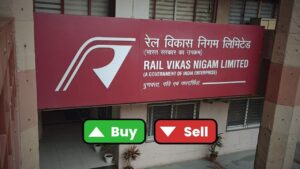The problem of performance and scalability is critical in the highly competitive and rapidly developing SaaS market, where it is crucial to satisfy users and handle growing traffic loads. Today’s organizations need applications that can scale up and down while keeping latency low and performance high. To these challenges, Bhanuprakash Madupati has provided solutions by creating a highly scalable .NET Core solution that improves SaaS platform performance and minimizes loading time. This innovative approach converts traditional monolithic applications into microservices-based application architectures, suitable for cloud-native environments concerning speed, scalability and resource usage.
Bhanuprakash Madupati has done a great job in SaaS platform development. He spearheaded the process of changing a traditional finance system to a cloud-based SaaS application built on the.NET Core technology. It led to enhanced performance by 40% and also increased scalability. Thanks to the knowledge of microservices architecture, he was able to scale services independently, and thus reduce latency by 60% during the increased traffic, which would allow the system not to be overloaded during periods of increased activity.
Another significant accomplishment was Bhanuprakash’s use of containerization and orchestration using Docker and Kubernetes, making deployments faster and scaling automated. By optimizing the main components with asynchronous programming, he increased the system response time by 50% and thus the usability of the system. It also involved setting up CI/CD pipelines to improve build test and deployment, minimizing time for new features, and also minimizing downtime.
The changes Bhanuprakash has brought to his workplace are measurable. He increased the response time during peak hours by 50% by using asynchronous programming thus increasing user satisfaction. A re-architecture of a legacy application into a microservices framework that he made helped to achieve a 60% decrease in latency during periods of high traffic thus improving the reliability of service. He was also able to cut the operational cost by 40% after migrating services to a cloud-native infrastructure by improving the way resources are managed and overhead costs incurred. The use of real-time monitoring tools such as Azure Monitor and Application Insights which he integrated into the system lowered system downtime by 25% to address issues before they occur.
Bhanuprakash has also delivered his work on key projects including the Cision Cloud Communication (C3). He led the change from a single application to a microservices architecture and saw performance increase by 40%. In another e-commerce project, his architecture enhancements resulted in a 60% cut in transaction delay and greatly enhanced the site’s load times during events such as flash sales.
Despite these challenges, Bhanuprakash has successfully implemented new solutions: migrating a big monolithic application to microservices, and dealing with traffic loads that earlier led to performance issues. The phased migration plan and auto-scaling solutions based on Kubernetes helped him avoid significant outages and guarantee stable service performance.
In his capacity as an acknowledged expert on the development of SaaS, Bhanuprakash talks about the benefits of microservices architecture for scalability and the need for asynchronous programming in conditions of high concurrency. He opines that cross-platform development through.NET Core will keep on transforming the industry by offering versatility and affordability. His wisdom is in tune with the modern development of modular, cloud-native solutions that are capable of supporting modern software platforms without the need for an excessive amount of additional resources while at the same time improving the overall usability of the final product.
In conclusion, SaaS performance enhancements via Bhanuprakash Madupati’s scalable .NET Core solutions have not only enhanced system performance but also established standards for cloud-native configurations. His work is still defining what is possible in the SaaS space going forward in terms of scalability, performance and cost.












